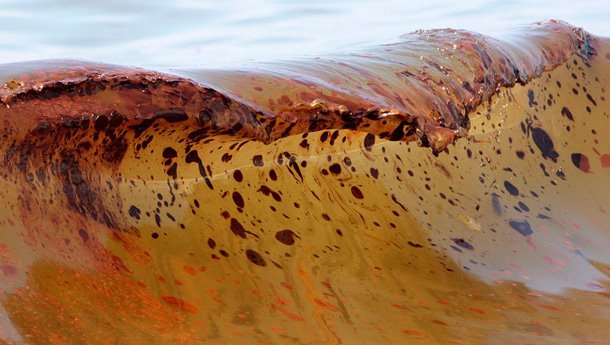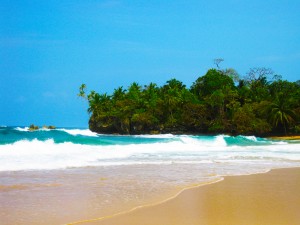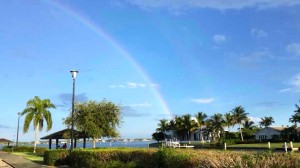Photo Contest
Photo Contest
All science starts by being curious about nature. Simply observe nature, capture its beauty, and share it!
Spring 2015 Winners:
The Spring 2015 CARTHE Photo Contest theme was: WAVES.
Spring 2014 Winners:
Sponsored by:
1st Place “Ocean” – Andrew Margolin
Scientists retrieving a drifting sediment trap in the Ross Sea, Antarctica, while surrounded by Pancake ice, which forms when seawater is agitated by waves as it freezes. The water is brown due to diatom blooms. The photo was taken on the Research Vessel/Ice Breaker Nathaniel B. Palmer.
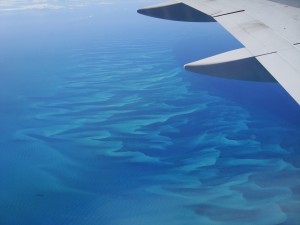 Runner Up “Ocean” – Janine Turbe
Runner Up “Ocean” – Janine Turbe
Flying above the Tongue of the Ocean area of the Bahamas.
The structure seen in the photo are oolitic sand shoals, composed of ooid grains. Ooids are grains with a nucleus (piece of shell, peloid, other grains) that is agitated with incoming + outgoing tides and with the right water chemistry, they precipitate concentric layers of calcium carbonate around the nucleus. High energy environment, correct chemistry, and available nuclei are all requirements for ooid formation (and thus ooid shoals).
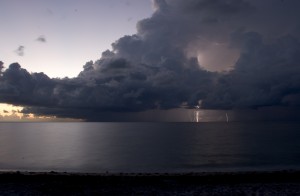 1st Place “Clouds” – Evan D’Alessandro
1st Place “Clouds” – Evan D’Alessandro
A thunderstorm cloud (Cumulonimbus cloud), characterized by violent vertical motions, captured at sunrise from Key Biscayne, FL. Within the cloud, there is air moving at high speeds upward and downward, creating this tall cloud tower and carrying raindrops, hail, and ice particles, which collide with each other at high speeds. This process is believed to cause a separation of charges, so parts of the clouds become positively/negatively charged. Once the charges are strong enough, a lightning flash, which is an electrical discharge, appears.
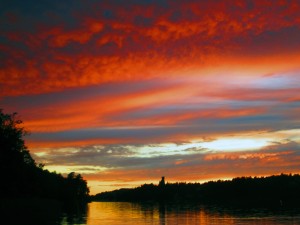 Runner Up “Clouds” – Sarah Rivard
Runner Up “Clouds” – Sarah Rivard
Midsummer sunset along the Baltic Sea, near Stockholm, Sweden. The sun is already below the horizon, and all the blue light is “scattered” (lost) as the sun rays travel through the atmosphere. Since the clouds don’t really have a flat bottom, we see the observed structure: some parts of the clouds are lower, getting direct sun light from the sun that’s below the horizon while other areas are not able to receive direct light and appear dark.
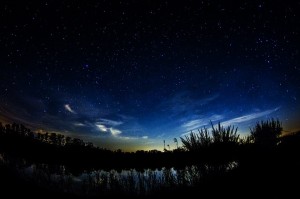 1st Place “Inland” – Frank Gibson
1st Place “Inland” – Frank Gibson
A crystal clear, calm night at Big Cypress, Everglades National Park. The photographer was over 50 miles from the city lights of Miami on this almost cloudless night, which allowed the stars to be seen so clearly.
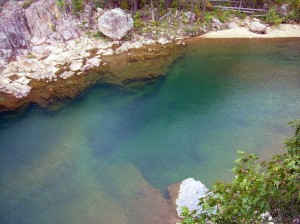 Runner Up “Inland” – Sarah Rivard
Runner Up “Inland” – Sarah Rivard
Johnson’s Shut-Ins State Park, MO. The variations in color in this area are caused by a billion years of rocks and sediments, including the fine-grained volcanic rhyolite, the harder coarse granite, and the grayish-white Cambrian-era dolomite. On the surface you can see small ripples or capillary waves.
Youth Winner – Doreen Qin, 17 years old
Rainbow over Vero Beach, FL. Falling raindrops act like billions of little reflectors. The sunlight gets refracted (bent) inside the drops like in a prism. This causes the beam to split into many different colors. The colorful rays are reflected inside the droplet and we then see a rainbow.
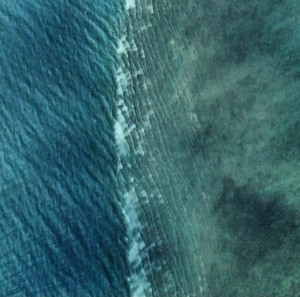 Honorable Mention (iphone photo) – Claire Paris
Honorable Mention (iphone photo) – Claire Paris
Wind waves from the Coral Sea breaking on the Great Barrier Reef
Entry Rules
- Images can be of the ocean, coastal water systems, or inland water systems.
- All photographs must be taken in a natural fresh-water or salt-water environment.
- The CARTHE Photography Contest is open to all amateur photographers. Amateur photographers are those who earn no more than 20% of their income from their photography. Eligible photos are those that have not been published or accepted for publication and must have been taken by the person submitting the entry. The Photographer must have ownership and copyright of all entries.
- Digital editing of photographs is acceptable in moderation. Only minor adjustments will be accepted (ie. minor brightness, contrast, or cropping). Any heavily filtered or manipulated photograph will be rejected at judges’ discretion.
- Ownership and copyright of all entries remain with the photographer. CARTHE, GoMRI, and RSMAS reserves the right to publish the winning photos without compensation for educational purposes, including, but not limited to publication on the CARTHE/GoMRI/University of Miami/RSMAS websites, social media, in brochures or for future contest promotion. Proper credit will be given to all winners.
- By submitting your images, you are agreeing to the terms above.


